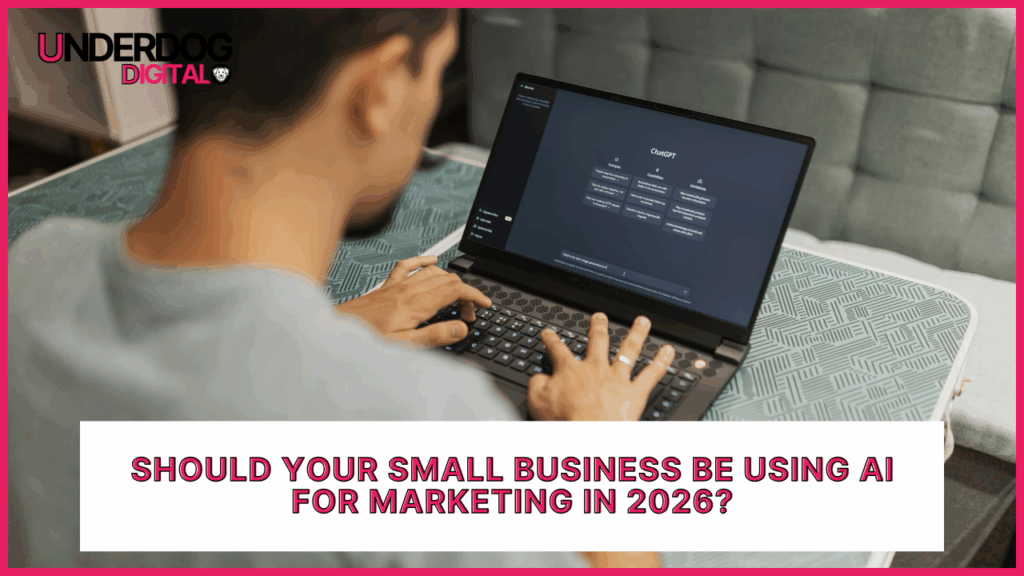Is Your Small Business Getting Crushed by Bigger Competitors Online? Here’s How to Fight Back
If you’ve ever looked at your competitors online and thought, “How am I supposed to keep up with THAT?”, you’re not alone. Big brands show up everywhere: Google ads, Instagram reels, slick websites, polished campaigns. It can feel like they own the entire digital playground. But here’s the truth nobody tells you: Winning online has very little to do with size and everything to do with strategy. Small businesses aren’t losing because they’re small. They’re losing because they’re trying to play the same game big companies play. And that’s the wrong game entirely. With the right approach, a small business can outrank, outshine, and outsmart much bigger competitors. This is where the real fight begins and where you can win. Why Big Competitors Seem Impossible to Beat Big brands look unbeatable because they appear to have endless resources. More money. Bigger teams. More content. More tools. More ads. On the surface, that feels overwhelming. But here’s the twist: Most big brands are slow, disconnected, and out of touch. Their content goes through layers of approvals, ends up sounding like it was written by a legal department, and often lands as generic, broad marketing that misses the mark. They’re loud, but that doesn’t mean they’re effective. Small businesses, meanwhile, understand the community on a real level. They hear customer concerns firsthand, see what people care about, and know what actually resonates. Big companies can only guess, you get to witness it every day. So yes, big competitors seem intimidating, but they’re far from invincible. The Real Advantages Small Businesses Have (That Big Brands Don’t) Here’s the part most small businesses don’t give themselves enough credit for: the advantages that matter most online today are the ones big brands can’t buy. Audiences want content that feels real, human, and grounded in the community, something only a local business can deliver. Authenticity: People are exhausted by overly polished, corporate content. They want real faces, real stories, and real moments from the businesses they support. Speed: Big brands move slowly. Approval chains, meetings, committees, you know the drill. A small business can pivot in a single afternoon. Local Presence: You’re part of the community. You see what’s happening, what people care about, and what your audience responds to because you live in it every day. Flexibility: Trying new ideas doesn’t require permission from three departments. If something resonates, you can lean into it instantly. Human Connection: Customers love supporting businesses that actually care. When people feel that connection, they remember it and they come back. At the end of the day, digital platforms don’t reward the biggest brand, they reward the most relevant, helpful, and engaging one. And that gives small businesses an edge they often don’t realize they have. How Small Businesses Can Fight Back and Actually Win Online Small businesses can take the lead by showing up consistently, even with simple content. Short-form videos, quick posts, and behind-the-scenes moments go a long way. Consistency matters more than polished perfection. Local SEO is another major advantage. Google rewards businesses that serve the community, so optimized content, strong reviews, and regular updates can help small businesses outrank national competitors. Storytelling also creates a powerful edge. People buy from brands they feel connected to, so sharing your story, your team, and your mission builds loyalty in a way big brands struggle to replicate. Targeted marketing helps small businesses stay efficient. You don’t need to reach everyone, just the right people. A focused strategy consistently beats a broad, expensive one. And community-driven content, events, collaborations, shoutouts, builds trust and visibility faster than paid ads alone. Showing up in the community signals that you’re part of it. At the end of the day, winning online isn’t about being the biggest. It’s about being relevant, present, and human and that’s where small businesses thrive. The Playbook That Helps Small Businesses Win Big This is where Underdog Digital makes a real difference. The team partners closely with small businesses to build marketing strategies that highlight their strengths instead of forcing them to imitate larger competitors. With a thoughtful, community-focused approach, the team emphasizes storytelling, consistency, creative execution, and data-driven strategy, giving small businesses the tools they need to stand out in crowded markets. Small businesses gain momentum when they stop trying to mirror big brands and start leaning into what makes them unique, relatable, and memorable.Ready to stop getting overshadowed and start showing up with confidence? Connect with Underdog Digital today and get a strategy built to help your business compete and win, online.







